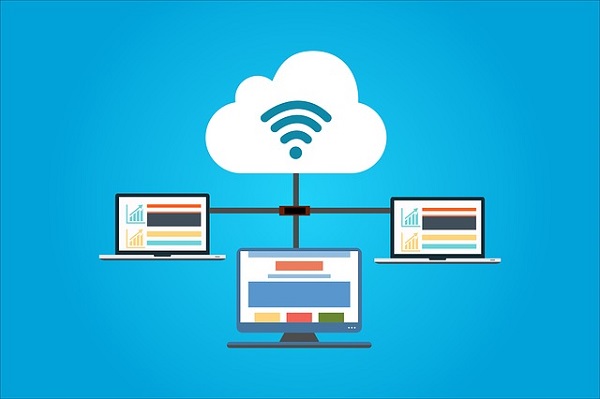PDF Version: Need-Of-Augmented-Reality-Strategy-For-Businesses
Category: Security Page 29 of 75
There is immense hype surrounding Internet of Things (IoT). However, irrespective of technological advancements and immense benefits offered by IoT, there are some potential challenges that limit the application of IoT. In order to understand these hurdles, it is first important to understand what IoT is and how it works?
IoT is a network of interconnected things, devices, machines, animals or humans that are equipped with sensors, software, network connectivity and necessary electronics which enable them to share, exchange and collect data. The sensors of every connection in the network communicate with a cloud system and send data to it through internet connectivity. Once data is received by cloud, the software processes it to take an action like sending an alert or making adjustments to sensor/device with manual efforts of the user.
Following are the hurdles that limit the use of Internet of Things:
- Availability Of Internet: Although IoT offers high levels of convenience and technological access to users, but there is a basic internet requirement for IoT to be operational. Undoubtedly, internet access is not considered to be a problem by majority of people, but there are still some areas of world where internet connectivity may be spotty or absent.
- Expenses: IoT requires placement of sensors on the devices or objects. For implementing this technology to its complete potential, there is a requirement to place sensors on roads, traffic lights, utility grids and buildings. Embedding sensors on all required places is looked upon as a huge expense. Progress has been made to develop cheaper sensors. However, more progress is required before organizations would embrace the technology completely.
- Privacy & Cyber Security: As the number of cyber security breaches is rising, organizations and individuals are thoroughly concerned about the security related to IoT. If every household item or organizational computer is connected over web, it raises the need for strict cyber security protocols.
- Data Surge: It is estimated that by 2020, around 26 billion items or objects will be a part of IoT. This will lead to the generation of large amount of data. So, businesses need to invest in new hardware, equipment and data mining techniques for effectively collecting and analyzing data in real time.
- Consumer Awareness: IoT is a technological buzzword, but still 87% of general public is unaware of the term or its actual meaning. There are chances that people may actually be using the technology in some way and yet be unaware of it. This lack of knowledge may result in loss of interest. However, there has been an increased interest in the use of wearable technology which could act as a gateway for other connected objects.
Irrespective of these hurdles, the number of IoT developers is expected to reach 4.5 million by 2020. This gives a hope for new solutions to these hurdles for facilitating the spread of technology and its applications.
For more information on Internet of Things, call Centex Technologies at (254) 213 – 4740.
With the increasing need of improving efficiency and reducing latency, most organizations are opting for cloud-based services. However, there are some risks associated with using third party cloud hosting services. These risks may have an impact on various aspects of business which could have financial, legal and technical implications.
Some of the common risks associated with cloud-hosted data are:
- Consumer Visibility & Control: As the operations of an organization are transitioned to the cloud, it results in shifting of some responsibilities to CSP (Content Security Policy), which may lead to organization losing visibility or control over certain operations and assets. For example, network based monitoring and logging, limits an organization from accessing the details about its own application or data which should otherwise be easily accessible to the IT department. Thus, it is important to thoroughly ask the cloud service provider about various cloud hosting models and the level of control available before transitioning the operations.
- Unauthorized Use: In order to inculcate user-friendly approach, some cloud hosting service providers may allow self-service to the users. This gives end users the authority to add more services without seeking necessary permission from the IT department of the organization. The lack of extra security increases the chances of addition of malicious links or code in the application and use of unsupported software, which can lead to enormous security breaches. This makes it important to understand access levels and service specifications provided by cloud hosting company.
- Cloud Data May Be Compromised: Most of the business applications use APIs (Application Programming Interface) to manage and interact with the cloud services. If there are any vulnerabilities in API security, hackers may access and attack cloud resources and data of an organization. Compromised organization assets can be further used to perpetrate attack against other linked customers.
- Exploitation Of Software Vulnerabilities: A shared cloud hosting service is simultaneously used by different organizations. Thus, it is important for the service provider to maintain clear separation between the resources of different cloud hosting users. If the infrastructure fails to maintain this separation, it leads to the risk of cloud data leakage. This loophole provides the hackers a chance to access the cloud resources and assets of an organization to launch a successful data breach.
- Stolen Credentials: If organization’s credentials are compromised, hackers can easily take over the entire application which could result in Identity Theft attacks, deleted information, defamation of application interface, etc.
The risks associated with cloud-hosted data may lead to financial losses. Also, the cyber-attacks resulting from these risks mark a blow to the reputation of an organization. Thus, it is important to choose a cloud-hosting model and service provider after thorough diligence.
For more information on managing the risks of cloud-hosted data, call Centex Technologies at (254) 213 – 4740.

Website security refers to the applications or actions taken to make sure that website data is not exposed to unauthorized access or other forms of exploitation. It is important to pay attention to website security in order to protect your business website from DDoS attacks, malware, blacklisting, vulnerability exploitation and defacement. Website security is also important to protect your website users from personal data theft, phishing schemes, session hijacking, malicious redirects, etc.
Since the need for website security is imperative, here are some necessary steps to help you protect your business website:
- SSL Certificate: SSL (Secure Sockets Layer) Certificates are small data files that digitally bind a cryptographic key to an organization’s details. An SSL Certificate binds together a domain name and server/host name with an organization’s identity and location. When you install an SSL Certificate on a webserver, it activates the padlock and https protocol to ensure secure connection between the server and a web browser. It helps businesses in encrypting credit card transactions and securing data transfers or process logins.
- Install Security Plugins: Depending upon the fact that whether you are running a Content Management System (CMS)-managed website or HTML pages, you can choose plugins to enhance website security. Consult your website developers to choose suitable plugins for maximum benefit. Plugins help in addressing the security vulnerabilities that may be inherent in the website building platform.
- Use Parametrized Queries: A hacker can launch an SQL injection attack by using a web form field or URL parameter to gain access to or manipulate your database. If you use standard transact SQL, it is possible to insert rogue codes in the query that may be easily used by hackers to modify tables, access information or delete data. Thus, it is advisable to explicitly parametrize your queries in order to prevent the modification of queries by the hackers.
- Content Security Policy (CSP): XSS (Cross-Site Scripting attacks are another common type of cyber-attacks against business websites. Hackers inject malicious JavaScript in your webpages. When a user visits the website, this JavaScript runs in his browser. It is capable of changing the page content or stealing information from user’s device. This information is sent back to the attacker. In order to protect your business website from this type of attack, CSP acts as a powerful tool. CSP is a header that can be returned by the server to inform the browser about how and what JavaScript should be executed in the page. For example, it may have configuration commands to disable scripts that are not hosted on your domain.
Website security has many other aspects such as diligently choosing error messages to prevent users from viewing sensitive information, locking file permissions, etc. Thus, it is advisable to seek services from professional website security providers.
For more information on steps to ensure website security, call Centex Technologies at (254) 213 – 4740.




